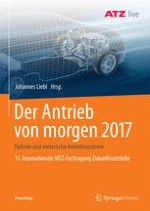2017 | Buch
Über dieses Buch
Der inhaltliche Schwerpunkt des Tagungsbands zur ATZlive-Veranstaltung "Der Antrieb von morgen" liegt beim Paradigmenwechsel durch künftig immer strengere Gesetze zu CO2-Emissionen sowie neu gestaltete, anspruchsvollere Prüfzyklen in Labors und realen Fahrsituationen. Die Elektrifizierung schreitet weiter voran. Antriebsstränge müssen noch stärker im Systemverbund Verbrennungsmotor, Getriebe und Elektrifizierung ausgelegt werden. Thematisch wird der Fokus auf die Antriebssynthese gelegt, während Komponenten und deren Fahrzeugintegration die Basis bilden.
Anzeige
